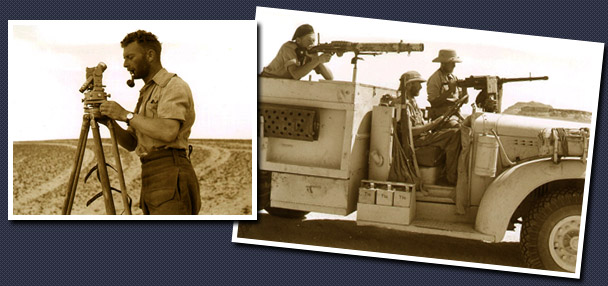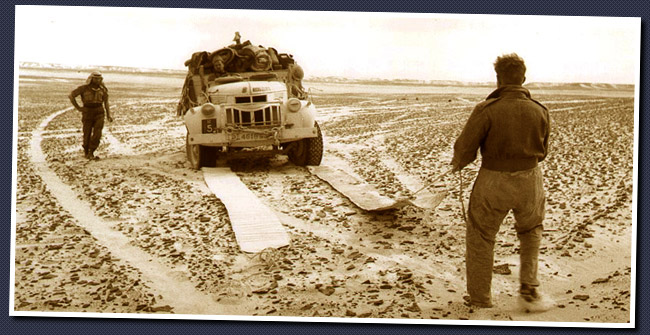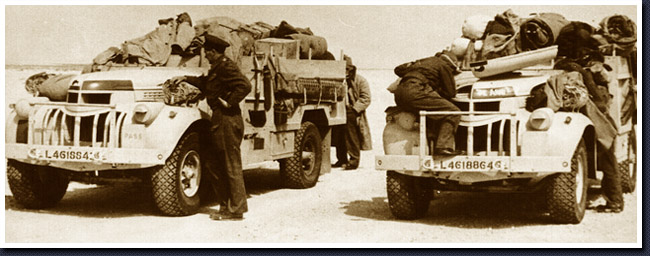The Long Range Desert Group
Not by Strength but by guile!

In the late 1930's, a British group of explorers led by R.A. Bagnold made many expeditions into the desert, studying it's characteristics, and perfecting ways of navigating across the vast desert wastes. In 1940 Italy declared war on Great Britain and the Italian forces in Libya posed an immediate potential threat to the British in Egypt, and to the Suez Canal the gateway to the East. General Wavell was the British Commander-in-Chief in Egypt, with a vivid imagination and love of the unorthodox, created patrols which could reconnoitre and harry the enemy in unexpected places. The early success of these mobile patrols at destroying enemy aircraft and air bases, blowing up weapons and fuel caches, mapping routes and enemy positions, and creating hidden supply dumps for allied forces, convinced the Brittish War Office that these "motor guerillas" were a good idea and the Long Range Desert Group was born.

The LRDG was very much like a "private army", formed to meet the particular conditions of desert warfare. Between 1932 and 1938 the British explorers had learned much about motor travel in the inner desert, and some had actually crossed the Egyptian Sand Sea. They had acquired the skill to discern a course amidst the huge sand dunes,and mastered the art of driving a vehicle up and across them without embedding or overturning it. They had invented 'unsticking' devices, such as the sand-channel; they had studied and adapted methods of navigation; and they gained experience of desert surface of all types, from loose sand to fields of basalt.

Major Bagnold acquired and adapted vehicles to suit his needs, including the Chevrolet 15 cwt truck used by the Egyptian Army. This was a standard "platoon" truck on a Canadian-built Chevrolet chassis, fitted with desert tires and with an open body big enough to hold the stores and equipment needed for long trips into the desert. For desert operations with a very heavy load, they had extra leaves inserted into the springs, desert type tires, wire-less, and a condenser fitted on the running board and connected to the radiator to conserve cooling water. Doors and door pillars were removed, extra spare wheels fitted and pintle mounts were added for machine guns and antitank rifles.

The load carried might be up to two tons, consisting of food, fuel ammunition, water and explosives for demolition work. A sun compass was usually carried in the dashboard, a Bagnold invention and theodolites and sextants were used to fix positions. The Long Range Desert Group's task for most of the time was watching, waiting, plotting enemy movements and reporting back by radio. Because the LRDG was made up of volunteers it never really had regimental status. The men wore whatever clothes were comfortable. Beards and other non-regulation military practices were common, adding much to the "piratical" flavor and swash-buckling image of the LRDG force.

|



